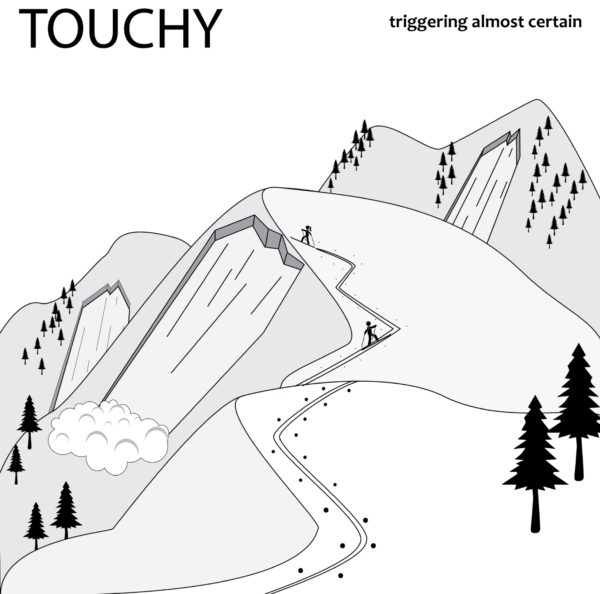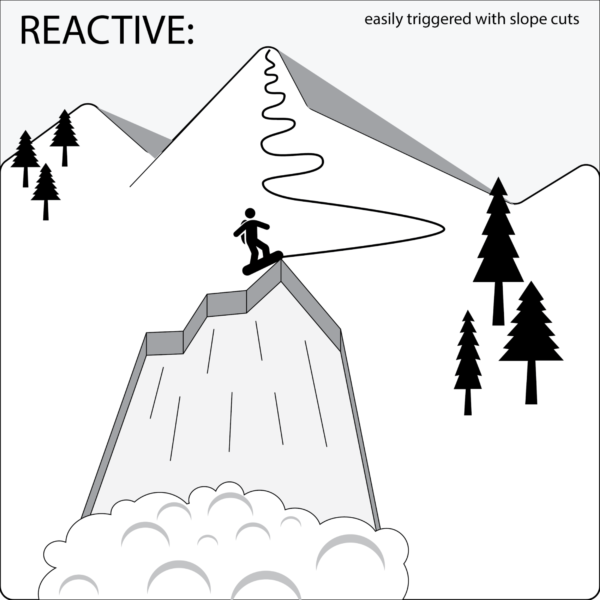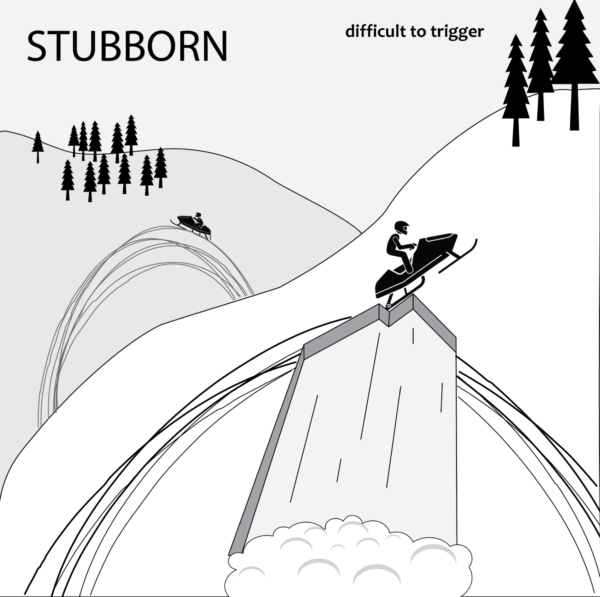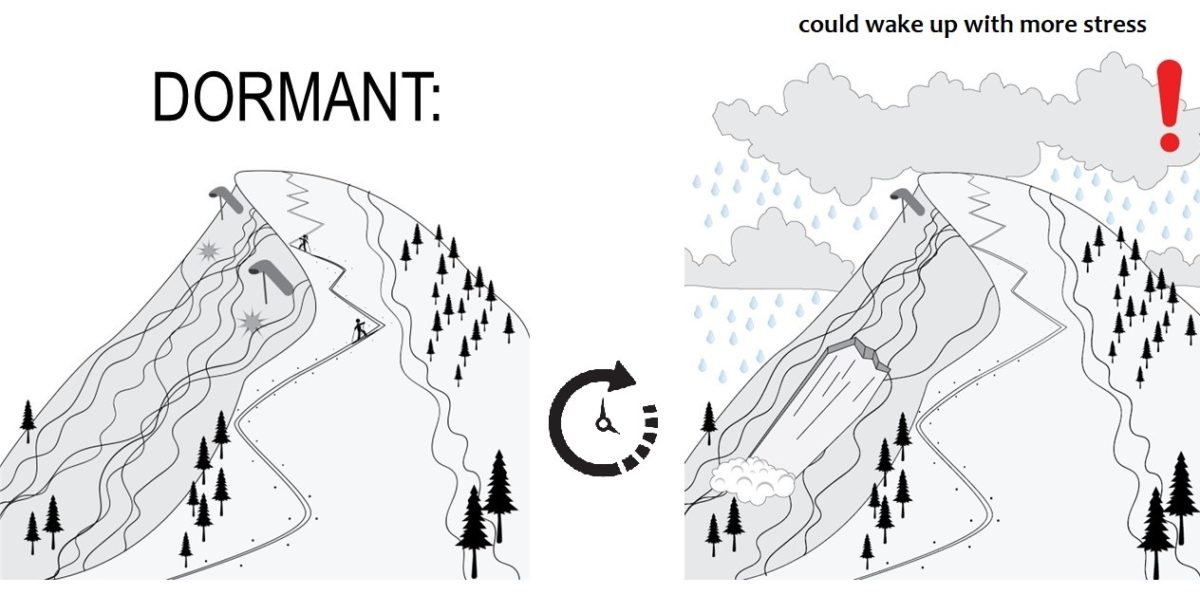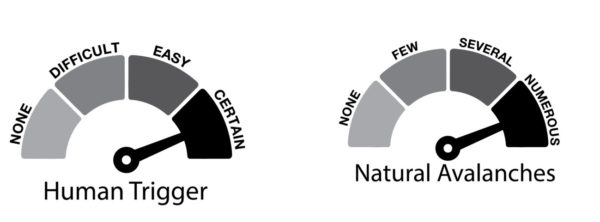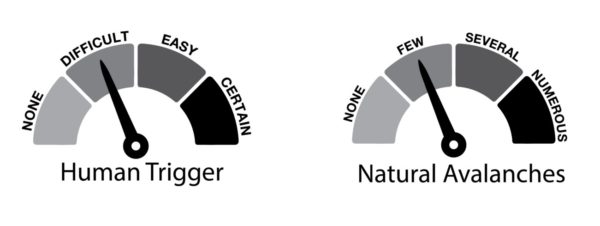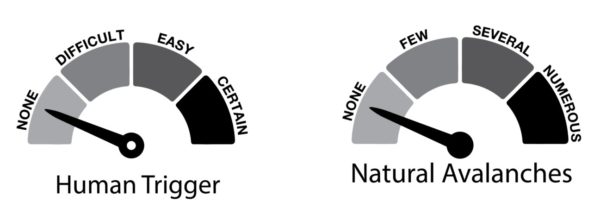How easy or difficult it is to initiate avalanches for both natural and artificial triggers. Sensitivity is a measure of the snowpack’s instability.
Touchy: Avalanches are very sensitive to triggers. Touchy avalanche conditions mean that human triggering is almost certain, and natural avalanches are numerous. Small explosives or triggers will produce numerous avalanche results.
Reactive: Avalanches are sensitive to triggers. Reactive avalanche conditions mean that humans can easily trigger avalanches with slope cuts. Several natural avalanches are expected. Single hand shots or medium-sized cornice drops will result in many avalanches.
Stubborn: Avalanches are tougher to trigger. Stubborn avalanche conditions mean that it is difficult for humans to trigger avalanches, and only a few natural avalanches are expected. Large explosives, airblasts, and large cornice falls, often in several locations, will result in some avalanches.
Unreactive: Avalanches can’t be triggered. Unreactive avalanche conditions mean that human and natural avalanches are not expected. Very large explosives or very large cornice falls in several locations result in no slab avalanches.
Dormant: Weaknesses in the snowpack have become unreactive, but can become more reactive under additional loading or warming. Dormant avalanche conditions mean that weak layers are not entirely healed but have reached equilibrium under current conditions. Additional loading or warming could spur continued activity on a given weak layer.
